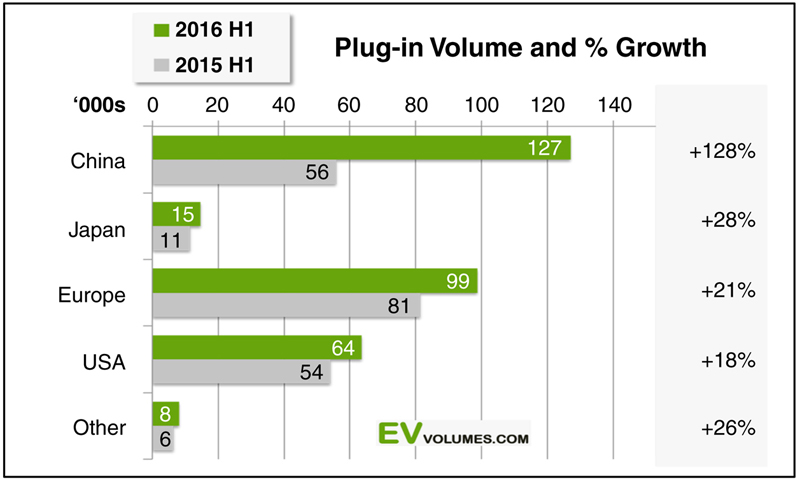Powering the Driverless Electric Car of the Future
Abstract
The automotive industry is entering an era of transformative change, a key element of which, is the increasingly rapid uptake of electric vehicles (EVs). The prospect of battery-powered electric vehicles (BEVs) becoming both a major power consumer and part of a new distributed supply source is, therefore, a critically important planning issue for power utilities. This chapter describes the likely ongoing exponential increase in EV adoption as a product of a coincidence of powerful technological, social, commercial, environmental, and governmental forces. Explored is the way in which EVs will interface with power grids and the likely effect on demand and supply.
Keywords
1. Introduction
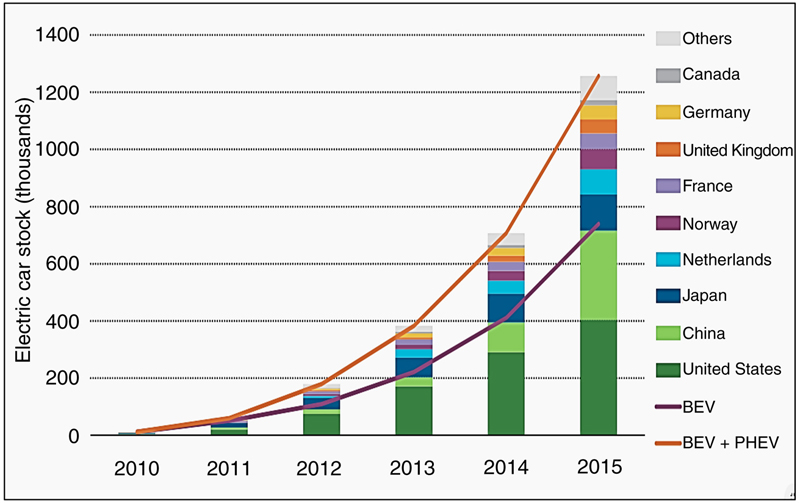
Note: The figure’s legend for different countries (bottom to top) is replicated in the same order on chart’s bars from bottom to top. The top graph line represents BEV and the bottom graph line BEV + PHEV. The EV stock shown here is primarily estimated on the basis of cumulative sales since 2005. (Source: International Energy Agency (2016a).)
2. Peak car and EVs


3. EV cost advantages
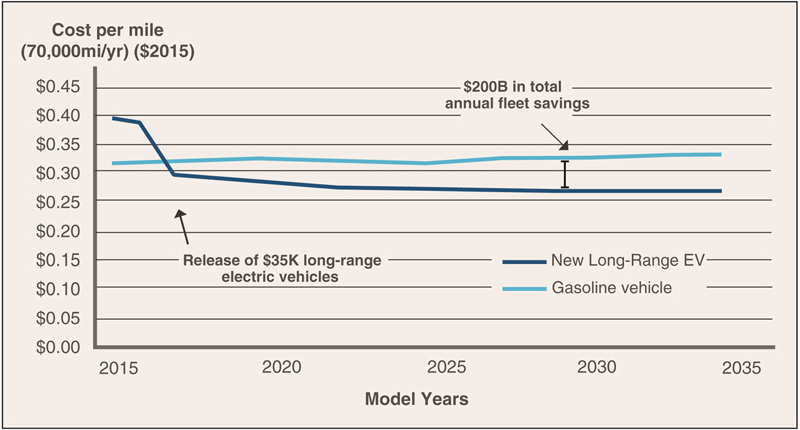
4. EV fueling infrastructure
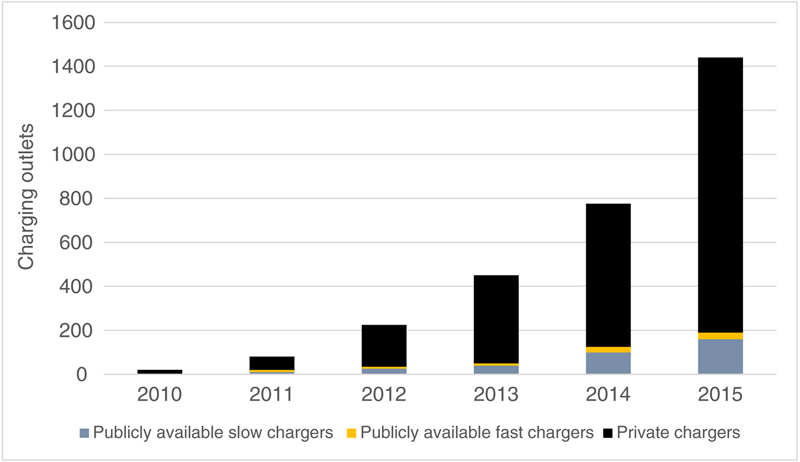
Note: The left to right order of the legend for types of power chargers is replicated in the figure’s bar charts from bottom to top. Private chargers are estimated assuming that each EV is coupled with a private charger. (Source: International Energy Agency (2016b).)
5. Commercial drivers of EV uptake
6. Developments in automotive battery technology
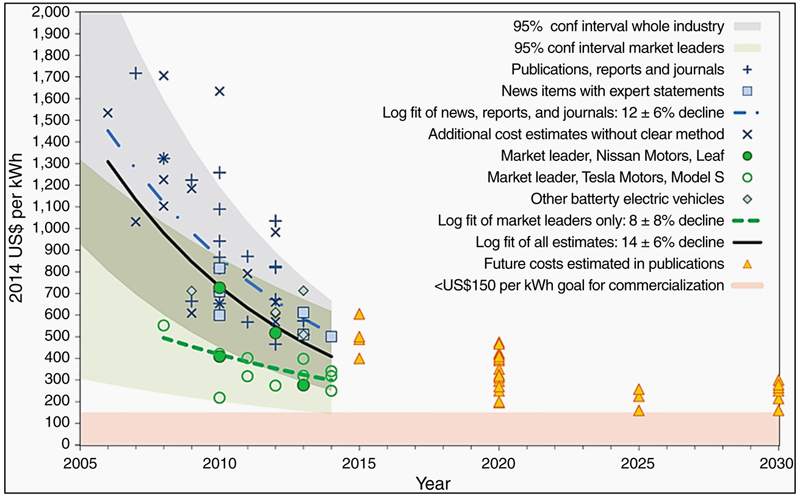
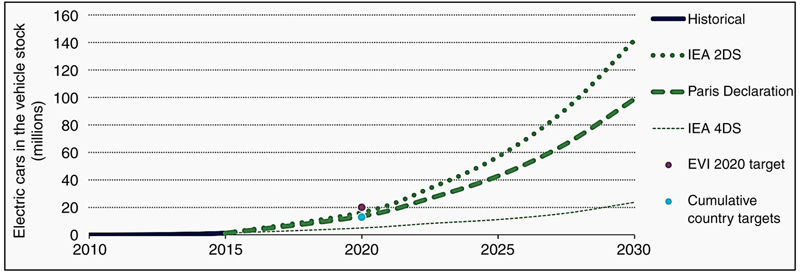
7. EV refueling infrastructure: interface with the grid
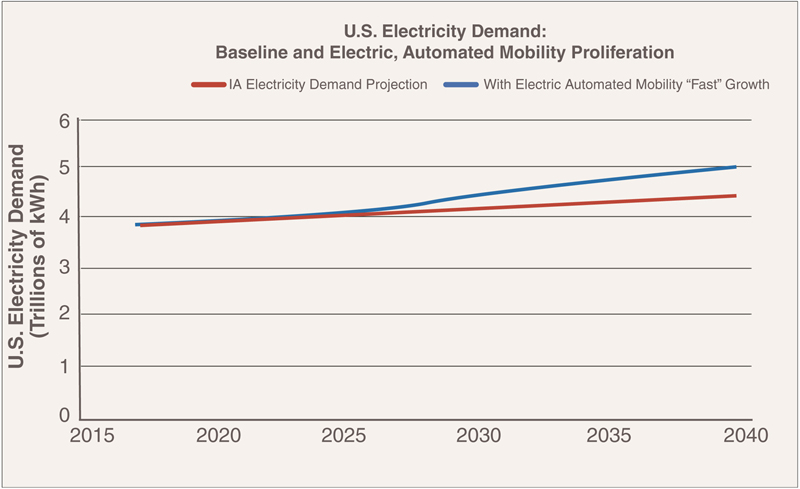
8. The future of EV battery technology
Table 6.1
International Comparison of Policy Support for EV Infrastructure

|
Source: International Energy Agency (2016d).
Notes: * Such as environmental/low emission zones; ** policy implemented in certain geographical areas (e.g., specific states/regions/municipalities), affecting less than 50% of the country’s inhabitants; *** policy implemented in certain geographical areas (e.g., specific states/regions/municipalities), affecting more than 50% of the country’s inhabitants.
Creating higher energy densities is easy. But mass producing batteries that won’t explode, suffer thermal runaway, are durable, don’t produce toxic byproducts during the charge/discharge cycle, and are inexpensive is extremely difficult. Many of these problems have held lithium-air batteries back from commercialization—such designs degrade rapidly when recharged, are damaged by the presence of water (a problem on planet Earth), or don’t hold up under multiple charge cycles. A battery that only retains 90% of its charge after 5 cycles and degrades to 50% charge after 10 cycles, again, isn’t very useful. (Putrus et al., 2009).
…. the supercapacitor will be developed to store more energy than a Li-Ion battery while retaining the ability to release its energy up to 10 times faster—meaning the car could be entirely powered by the supercapacitors in its body panels. After one full charge this car should be able to run up to 500 km—similar to a petrol-powered car and more than double the current limit of an electric car.
We are using cheap carbon materials to make supercapacitors and the price of industry scale production will be low. The price of Li-ionon batteries cannot decrease a lot because the price of Lithium remains high. This technique does not rely on metals and other toxic materials either, so it is environmentally friendly if it needs to be disposed of. (Motta, 2014).
9. Government and regulatory drives of EV uptake
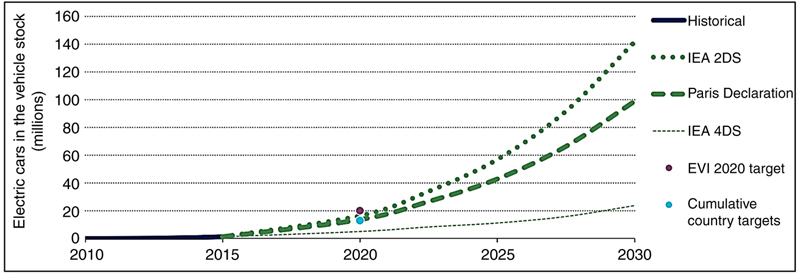
Note: 2DS = 2°C Scenario; 4DS = 4°C Scenario. (Source: International Energy Agency (2016c).)
